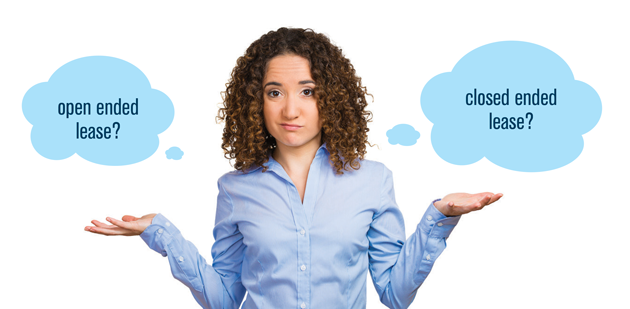The Differences: Open End Leases vs. Closed End Leases
There are a few differences between a closed end lease and open end lease that are important to learn about. Both open end leases and closed end leases have a different set of rules and parameters. When you are in the process of purchasing a new vehicle it is imperative to educate yourself ahead of time with the terms associated to car-buying. Which option is best for you?

What is a Closed End Lease?
Key Characteristics of a Closed End Lease
- Based on a pre-determined number of miles a customer will drive in a year.
- At the end of the leasing term, the customer is responsible for any excessive damage or additional mileage overages.
- Any loss of value, through depreciation of the vehicle, is the responsibility of the leasing companies, not the individual.
- The lessee has the option to purchase the vehicle, at the end of the term.
- The lessee has no responsibility in supporting the vehicle’s resale value.
- The fixed term of the lease is usually between 24 to 36 months.
- Interest rates are fixed with no variation in payments.
- Typically, your monthly investments will be less per month than a closed ended lease
What is an Open End Lease?
Key Characteristics of an Open End Lease
- Open-ended leasing is typically used in commercial leasing.
- The lessee is responsible for paying any difference between the estimated lease-end value (residual), and the actual market value at the end of the lease agreement.
- The total lease costs are calculated at the end of the lease term, and the vehicle(s) under the lease are sold.
- If a loss is incurred at the end of a lease term, it is treated as an additional payment to the consumer (lessee).
- Open-ended leases include variable depreciation rates, which can raise your monthly payments.
Making the Right Choice: Open End Lease vs. Closed End Lease
Will an open ended lease or closed ended lease fit your lifestyle best? If you have any questions about open or closed ended leases contact International AutoSource.





